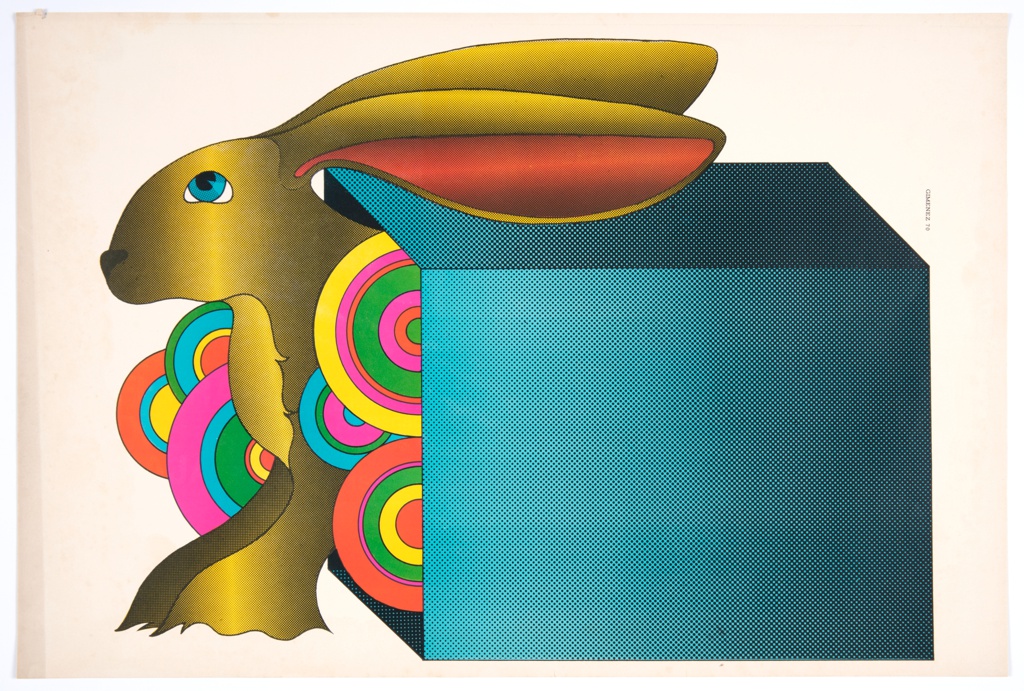
Poster, Untitled (Fuera de caja proof), 1970; Designed by Edgardo Giménez (Argentinian, born 1942) for Fuera de Caja (Argentina); Offset lithograph on paper; 37.5 x 55.9 cm (14 ¾ x 22 in.); Gift of the Institute for Studies on Latin American Art (ISLAA), 2021-29-11
At the close of 2021, Cooper Hewitt, Smithsonian Design Museum received a group of 24 important graphic works designed by the prolific Argentine artist Edgardo Giménez (born 1942) from 1964 to 1989. The collection represents a range of techniques, aesthetic sensibilities, and cultural events that bear witness to the experimental and counterculture movements that transpired in Buenos Aires, Argentina. Viewed as a whole, the works demonstrate the ways in which Giménez utilized graphic design to seamlessly weave together his interests in art, design, performance, and popular culture throughout his career. Not only do many of the posters speak to how international artistic trends—such as Pop Art, Psychedelia, New Abstraction, Kinetic Art, and postmodernism—circulated in the region, but this collection reveals how Giménez interpreted these styles to produce a new communication language that appealed to or even shocked Argentine society.
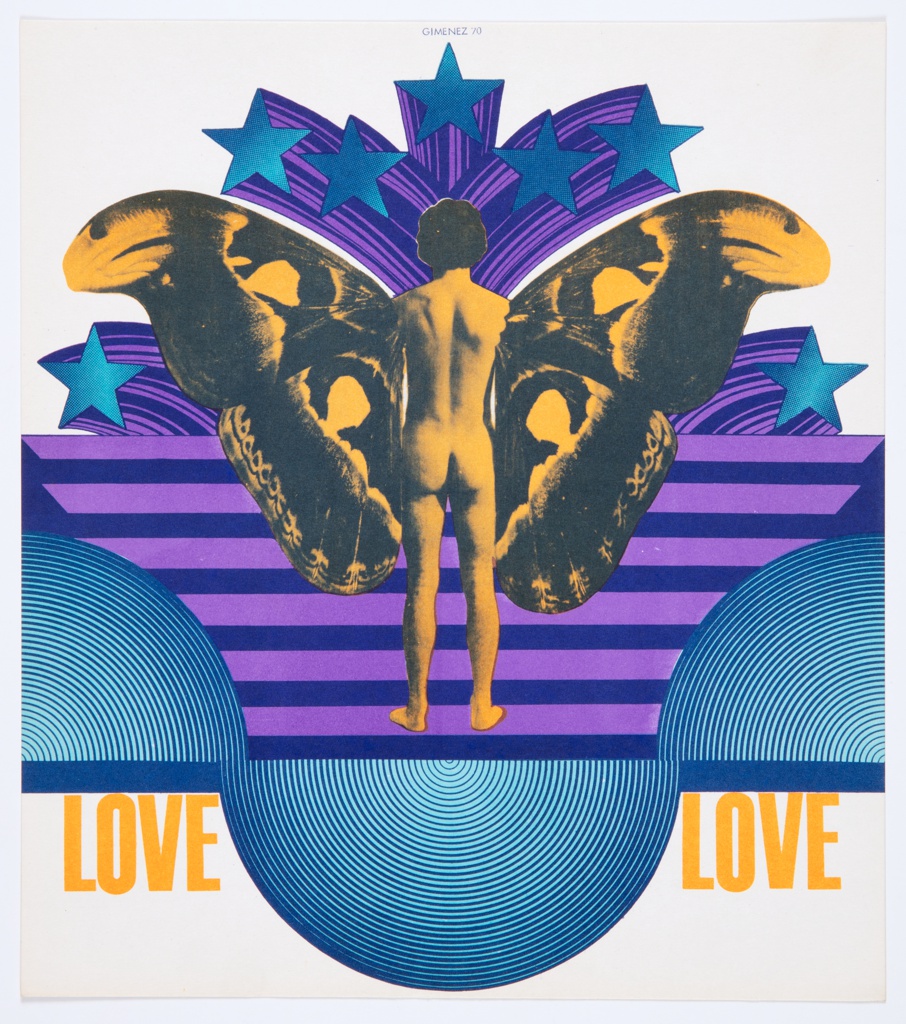
Poster, Love (Butterfly), 1970; Designed by Edgardo Giménez (Argentinian, born 1942); Screenprint on paper; 25.7 x 23.2 cm (10 1/8 in. x 9 1/8 in.); Gift of the Institute for Studies on Latin American Art (ISLAA), 2021-29-16
Giménez’s graphic designs are distinguishable by the clever use of photomontage, unexpected composition, imaginative typography, and vibrant color to produce engaging and avant-garde posters. He recognized the power of a daring image and its ability to incite curiosity—an effective tool he employed often to advertise cultural events and his services as a designer. Humor also played an important role, particularly with posters made to publicize his solo gallery exhibitions where he portrayed himself in bold and unabashed ways. In examples such as Edgardo Giménez en la galeria Rioboo (1964), he placed his head on top of a pigeon’s body and in Edgardo Giménez – Las Panteras Objetos (1966) he is pictured in boxer shorts riding a panther. Giménez was a masterful self-promoter and understood how to grab the public’s attention by producing audacious imagery meant to stun and challenge social norms. In Love (Hearts) (1967) and Love (Butterfly) (1970), he fearlessly referenced sexuality and his identity as a queer man. In a presentation card advertising his services as a graphic designer and scenographer, he placed himself under a rainbow dressed in a leather jockstrap and harness.
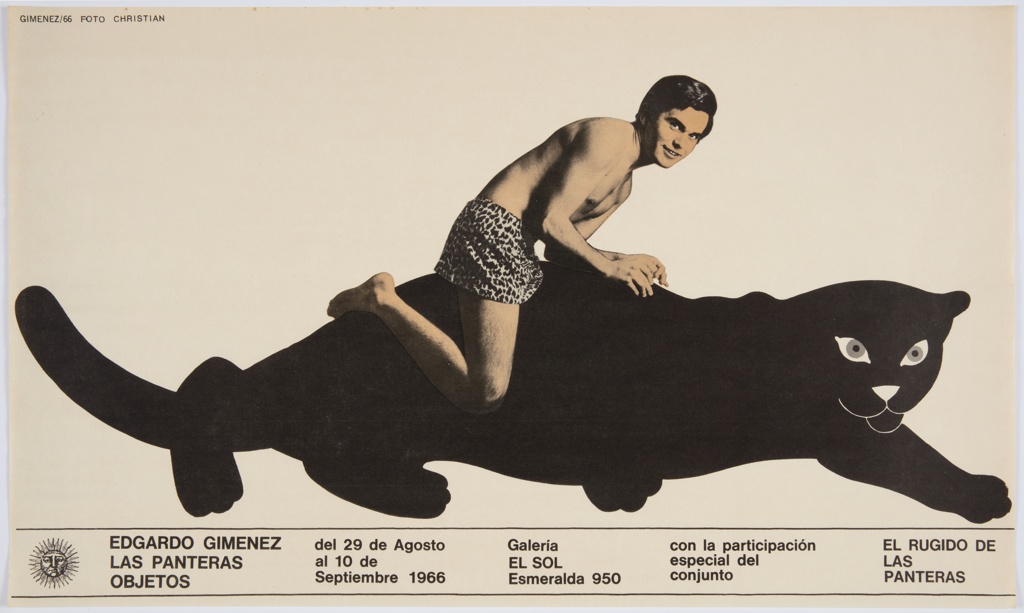
Poster, Edgardo Giménez – Las Panteras Objetos, 1966; Designed by Edgardo Giménez (Argentinian, born 1942); Offset lithograph on paper; 34.9 x 58.4 cm (13 3/4 x 23 in.); Gift of the Institute for Studies on Latin American Art (ISLAA), 2021-29-6
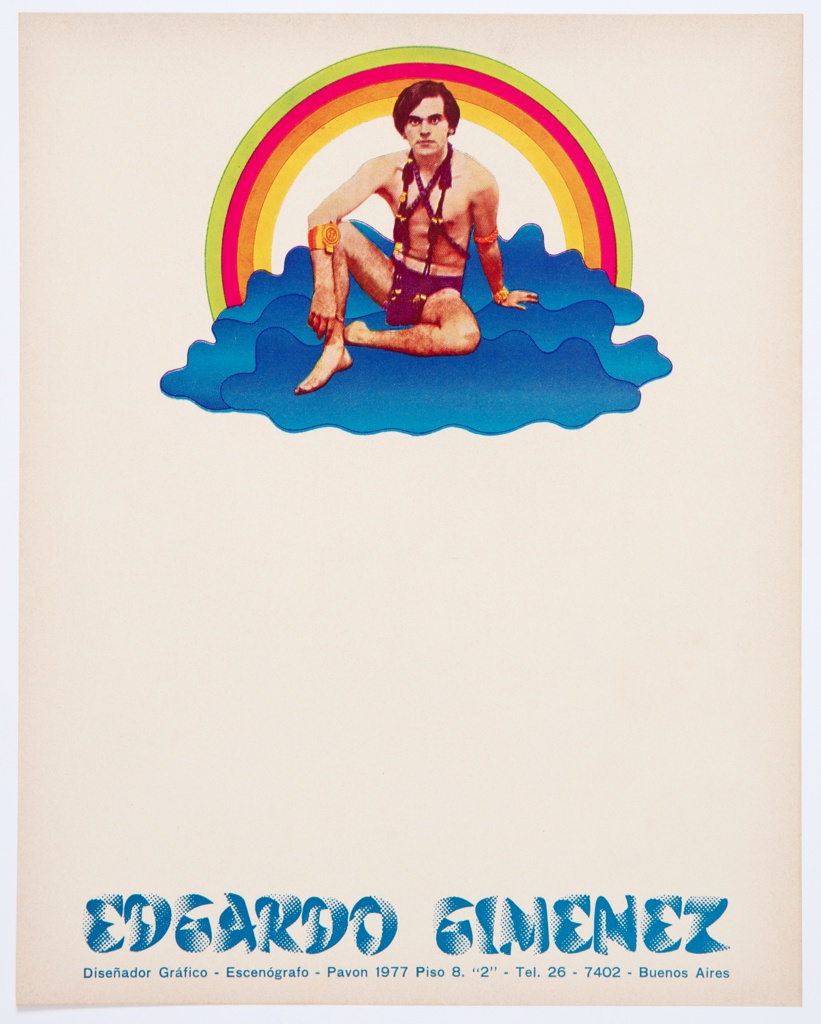
Poster, Edgardo Giménez – Diseñador Gráfico – Escenógrafo, ca. 1970; Designed by Edgardo Giménez (Argentinian, born 1942); Offset lithograph on paper; 27.6 x 22.2 cm (10 7/5 x 8 3/4 in.); Gift of the Institute for Studies on Latin American Art (ISLAA), 2021-29-24
Giménez’s posters stand as a testament to Argentina’s thriving artist community of the 1960s and ‘70s, before the country’s military dictatorship and Dirty War (1976–83) imposed a “cultural blackout” that repressed artistic expression. His advertisements for these cultural events are the vestiges of vanguard art exhibitions, dance performances, art happenings, and theatrical shows. Throughout his career, Giménez remained a productive and adventurous designer, creating a unique visual vocabulary that was informed by international stylistic movements and yet also distinctly his own.
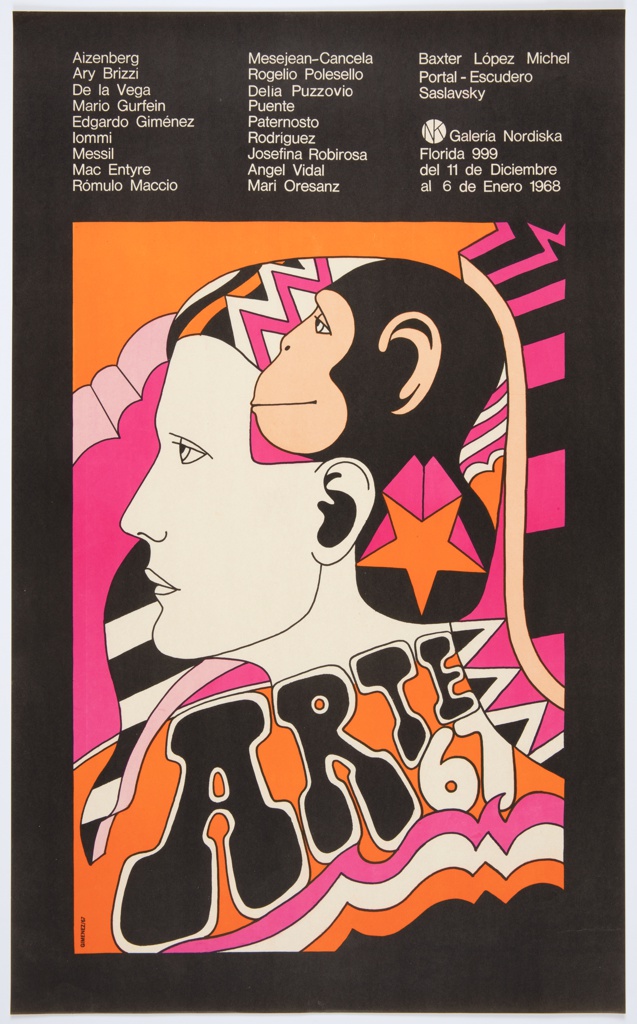
Poster, Arte 67, 1967; Designed by Edgardo Giménez (Argentinian, born 1942); Offset lithograph on paper; 59.1 x 36.2 cm (23 1/4 x 14 1/4 in.); Gift of the Institute for Studies on Latin American Art (ISLAA), 2021-29-9
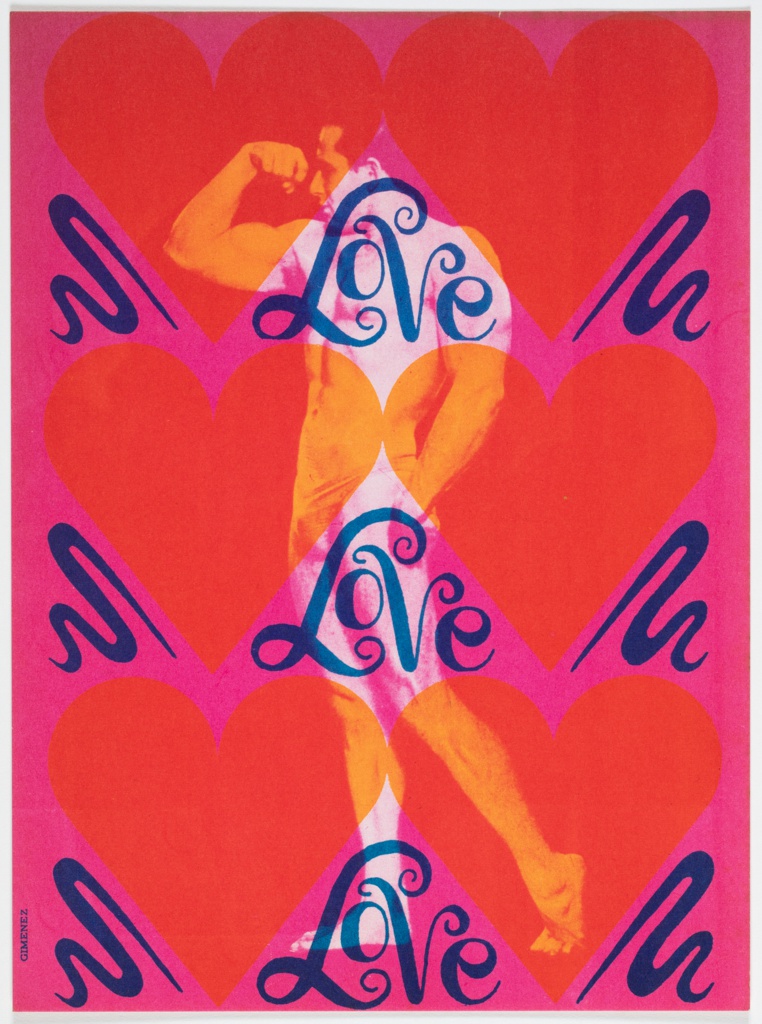
Poster, Love (Hearts), 1967; Designed by Edgardo Giménez (Argentinian, born 1942); Offset lithograph on paper; 21.3 x 15.9 cm (8 3/8 x 6 1/4 in.); Gift of the Institute for Studies on Latin American Art (ISLAA), 2021-29-7
Christina L. De León is Associate Curator of Latino Design at Cooper Hewitt.